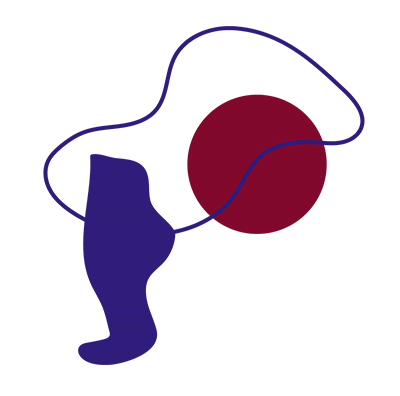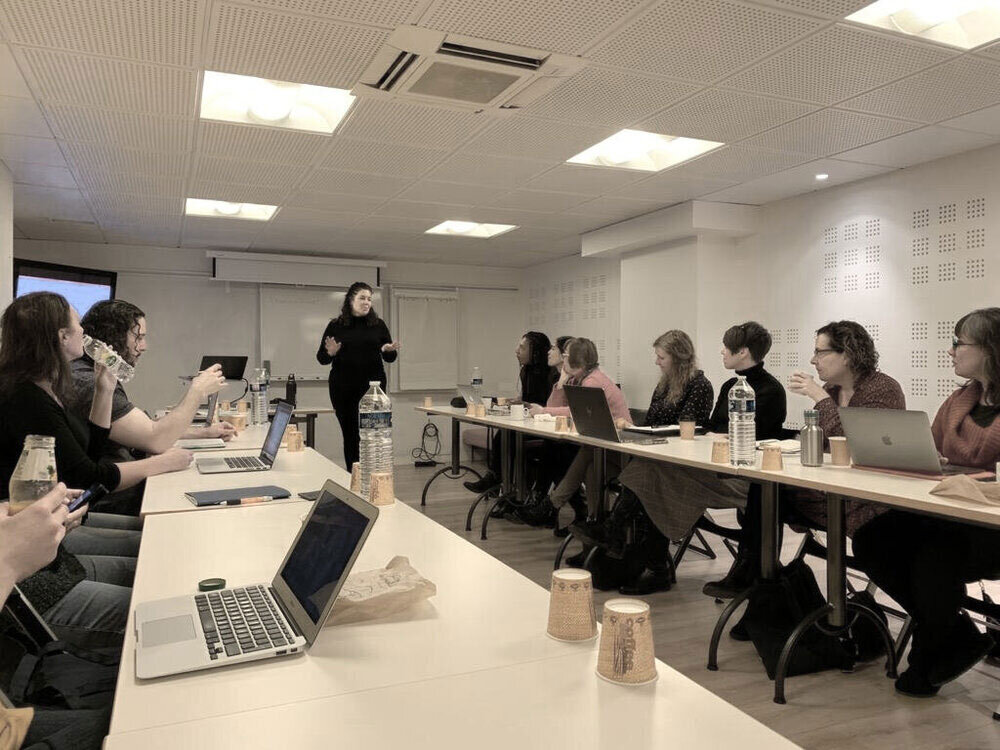Considering Our Digital Artistic Footprint - Part 4
by Mayumi Lashbrook
My fellow residents will be incredibly excited to see this post.
♡ ~SHOUTOUT!~ ♡ >>>
I think many artists are fearful and feel daunted by the thought of their digital artistic statement. When looking at social media, websites, and branding many of us feel we have the artistry itself to focus on, why put our precious time into anything else? And in so many ways I agree and feel that too.
So I was very keen to take Julie Fossitt’s workshop during the L’AiR Arts Residency to learn about arts marketing. I walked out feeling empowered and amped up about how my digital impression impacts my overall artistry. She encouraged us to really look at our digital footprint and sculpt it to match our artist within, with simple things you can do. Active but resistant to digital practises, Julie gave me a renewed understanding of my goals and stripped away layers of uncertainty and judgment for how to engage with a digital audience.
Equipped with her quotes and tips, I’ve embarked on a freeing journey into my digital artistic statement and am excited to share the thoughts I have on how to foster yours. I’m by no means done with my process of understanding this for myself, but I’ve found success and happiness through it and would love to share these five main findings:
Be clear in your values. Having done extensive research into who Aeris Körper is, our team values, and our mission through dance, I am lucky to already have this understanding of who I am in turn. But doing that work has been so rewarding in knowing what to post and what messages I want my personal and company to portray. Sit down and do the work to find your core beliefs, because it will make choices easier for you in future. For example, both myself and Aeris Körper have a deep desire to connect. When I repost a friend’s show, post a beautiful quote, or share a vulnerable feeling I’m having, I know those come from my deep desire to find connection with others. It gives me freedom in knowing I’m following my artistic goals when I share those things. On the flip side, I would opt out of posting something I feel would alienate someone as it breaks the safety I aim to create in connection.
YOU are interesting. Your process is interesting. This is direct from Julie and gave me such a sense of the magnitude of what we do as artists. It’s easier to forget as we’re in it all the time. But just like I would find it absolutely fascinating to hear how Crystal Pite or Twyla Tharp live, what I’m doing is just as intriguing. As Julie said, perhaps jokingly but also quite honestly, artists are the most interesting people on the planet. So share away because it’s all intriguing and will speak to your audience. If it doesn’t at the moment and you lose followers, then it will speak to your future audience of who you want to be attracting.
Control your content. One exercise we did which was incredibly valuable was googling ourselves. We got to see how we appear to others and how seemingly significant we are to someone stumbling on us. And that doesn’t mean we have to be massive with big fancy websites with all the right SEOS. But having control over the first 5-7 links to your name is incredibly powerful. Go simple and just start with a website. Then work towards platforms like Linkedin, Facebook, Instagram. And finish off with some media reviews and you’re golden.
Create more than you consume. Another gem direct from Julie that forced me to evaluate the time I am spending comparing vs. creating. For a solid month after getting home, I’d wake up in the morning and post something on Instagram before allowing myself to scroll. This habit helped keep me grounded and focused, giving more to my audience than taking away from my self esteem. It can be a time suck and an esteem deflation, so being conscious of when you’re edging into which territory is necessary.
Be curious. It’s so easy to look at these platforms and think ‘I can’t do this’. But what happens if you change your dialogue to “how can I do this?’, ‘I wonder if I do this, what will happen’. I’ve edited videos, created full graphic designs, created websites, and even coded because I walked in with the mindset of ‘I wonder what will happen if I learn how to do this’ and ‘I’m curious of what keywords I need to google to find the answer for that’.
I have worked to foster a digital voice that I feel comfortable and confident in, but of course it took energy and time. So be patient and kind to yourself as you begin the journey to discovering your online you.
I’ll end with some rapid fire thoughts and tips:
Little or no reaction doesn’t mean it didn’t resonate with your audience.
Your audience isn’t you. They share values and interests but they don’t look or act like you, otherwise they’d be the one making the art. Consider who they might be and how you can reach them.
Be generous and kind in your sharing and reposting, but guilt free when it doesn’t align with your core values.
Steal like an artist: find pages and people who you admire, pinpoint what works for them, and use it for yourself. It’s inspiration and collaboration, not plagiarism. As Kunji says, contamination is a good thing.
Like karma, the more you put out into the universe, the more you get back. Comment, like, react as much as possible without expectation of return (even though it will return, that’s how social media works).
Make a rule for yourself of what you want your practises to be when it comes to responding to others. Whether it's within 30 minutes or 30 hours, what do you want the standard to be for your business?
Think of it like putting yourself in the face of your mentor. You want to be remembered. You want to be seen. Each post you put out is like a reminder of your awesomeness and desire to share it with others.
If you’re afraid to ask someone to take your photo, offer to take theirs first. They usually offer the return to do it for you. The more photos and content you have, the easier it is to post.
I love the following apps for social media purposes: UNUM for planning your Instagram feedlayout, Foodie for cohesive photos, Hootsuite for pre-programming social platforms, Squarespace for websites (although you do have to pay for it), and Canva for graphic design purposes (there’s a free version which is great but the paid one does allow for a lot more flexibility and ease of use).
Track results but don’t judge. Also remember life is unpredictable; so is social media and traffic to your website. It’s nice to see direct correlations but sometimes it just ain’t explainable.
Don’t be afraid to tag. It’s like a love to someone and who doesn’t feel flattered when that happens? If anything, it’s bad to forget a tag so be liberal in them.
Set your calendar once a month to remind you to do a once over of your platforms for 30 minutes. Make small edits regularly so you don’t have to sit through a massive overhaul.
One post or change is 1% closer than you were before to being active and engaging for your audience.
EVERYTHING is takendownable. Worst comes to worse, take it off and apologize profusely and publicly if need be.







